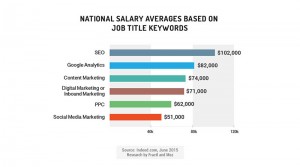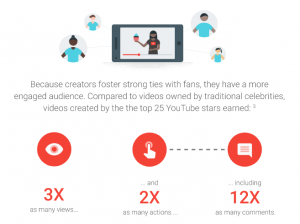— December 29, 2017

mohamed_hassan / Pixabay
The new year is fast approaching, and marketers are already looking ahead to determine the direction of their digital marketing campaigns when we enter 2018.
As the digital world is constantly changing, many marketers are wondering if their best move is to stay on their 2017 trajectory, or chart a different path forward.
To help you out, here are five key trends you should consider when developing your 2018 strategy.
Micro-Moments
What are “micro-moments” you ask?
A strikingly familiar action with a less-known moniker. Google defines this term as something “that happens when people reflexively take out a device.” Basically, it’s when you pick up your phone, real quick, acting on this compulsion to learn or discover something. It’s that need to figure out just where you know that actor from, whether a spider is poisonous, and so on.
It has proved that mobile gadgets are major influence in customer engagement and interaction with brands. Countless micro-moments stimulate the impulse to reach out for our mobile phone, from looking up how you might achieve your goal of purchasing a home, to finding out if your local market carries a specific item.
Most of us do this regularly, but research has shown that most people quickly Google information they aren’t sure about. In fact, about 96% use their smartphones to quickly learn new facts or discover key pieces of information.
By providing the right information at the right time to customers in need, successful brands can accurately pinpoint when a micro-moment might occur. The thought here is, that anticipating these needs, no matter how small, can have a lasting impact on customer relationships.
Influencer Marketing
Okay, before you roll your eyes and say, “influencer marketing was huge in 2017, how is this a trend?” Hear us out. Yes, influencer marketing was extremely popular in 2017. For the uninitiated, this term refers to the use of Instagram (and others) influencers to expand the reach of a brand’s messaging.
Capitalizing on the power of word-of-mouth marketing has led to positive results for brands, According to Collective Bias, 70% of millennial consumers are influenced by the recommendations of their peers in buying decisions. The same survey found that 30% consumers are more likely to buy a product recommended by a non-celebrity blogger.
Some industry pundits feel that influencer marketing is losing its luster, in part due to the prevalence of fraud or fake followers. The large payment required by some influencers exacerbates the effect of this. That said, advancements in artificial intelligence are helping to identify fake accounts and, as these techniques scale, influencer marketing should continue to gain momentum.
Artificial Intelligence
Artificial Intelligence is getting a lot of buzz and won’t be ignored by marketing. According to the Content Marketing Institute, we’ll be seeing AI creep into a long list of marketing applications. As this area continues to mature, here some ways we’ll see an impact sooner rather than later.
Here are a few examples:
-
Email
Email marketing is changing, too. With AI on our side, marketers will be able to do a better job with things like email-personalization, A/B testing, and more. While we’ve been able to pull names and data for a while, AI will soon take our efforts a step further, potentially helping us figure out which messaging is working, and which can be improved upon.
-
Website Personalization
Website personalization takes it a step further, by examining users’ history in your website. From there, it can provide them with relevant content, for wherever they are in the buyer’s journey.
Brands should start experimenting and need to look at AI solutions for marketing right now.
-
Your Digital Assistant
Artificial intelligence can be used to enhance sales, marketing, and customer support.
Brands who adopt early may find AI provides capabilities for cutting costs, accelerating growth, or making things just run more smoothly. Long story short, better to jump onto this next wave in innovation before your competitors
The New SEO
SEO is changing all the time–with the one constant here being change. While new optimization trends are on the horizon, as usual Google’s latest algorithm updates will shake things up for marketers.
Keywords, for example, will require a greater emphasis on natural, long-tail key phrases, optimized for the increasing popularity of voice search—which, as you might imagine, works more like how we actually talk.
Think, “what are the key digital marketing trends coming in 2018?” Versus, “marketing trends 2018.”
Technology is shifting from voice recognition to voice understanding as voice search becomes less frustrating and much more user-friendly. SEO elements like search history, keyword research, location data, and more, will all be affected by this change.
Additionally, search engines are getting a lot better at figuring out what people are looking for when they enter a query into the Google search box.
More users type full queries into search engines, so data and heuristics are collected, giving more targeted results. This year, it’ll be far more important to get into the head of your target audience. Figure out what questions people are asking, and going after those questions with your SEO strategy.
Ad Blocking
Because something like 63% of millennials use ad blockers, marketers must be prepared to allocate their budgets to working around ad-blocking technology.
Because ad blockers are, you know, blocking ads, marketers will need to gain more intel on their customers’ ad viewing habits. A way to kick-start this would be to conduct research with customers to learn whether or not existing ad strategies are effective.
Workarounds include things like social media and influencer marketing—mentioned above, as well as inbound. Embracing inbound practices may be your best bet in getting around ad-blockers altogether.
Advertising with networks like Facebook, Google, Twitter, and even LinkedIn, is a must. All of these platforms are “doing some of the best advertising at the moment” according to HubSpot.
HubSpot notes “each time you index a new page is a new opportunity for search engines to find you,” so blog posts and articles still work to improve the SEO of a website.
Marketers will find that success if possible, despite the popularity of ad blockers. Google has already been filtering out ads they deem annoying to web users—and marketers must do an audit to learn which efforts are no getting through to their audience.
Customer relationships are likely to improve as annoying ads are phased out in favor of better content marketing and engagement, getting rid of disruptive ads that hinder our online experiences.
Closing Thoughts
The scope for different brands and businesses to interact and engage with their target market is as boundless as ever, with digital technology like AI raising its profile. The five key trends outlined above show that much of what lies ahead builds upon existing trends—getting savvier about ad blocking, leveraging influencer profiles, and more.
Digital & Social Articles on Business 2 Community
(83)







